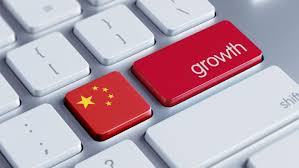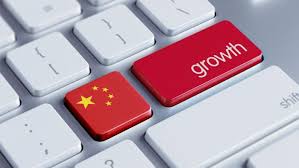
As the mainland economy shows signs of stabilizing, indicating that the industrial sector continued to expand in January and a tad faster than expected, shows China's official manufacturing Purchasing Managers' Index (PMI).
Down a smidgen from 51.4 in December, but still better than a Reuters poll forecast of 51.2, the manufacturing PMI came in at 51.3 in January.
While a reading below 50 signals contraction, a reading above 50 indicates expansion.
Larger companies are the focus for the official figures. With markets in China shout through Thursday to mark the Lunar New Year, the private China Caixin PMI, which focuses on smaller and medium-sized firms, is out Feb. 3.
From 54.5 in December, in January, there was a rise in the official non-manufacturing PMI, which takes a reading on the services sector, to 54.6.
The manufacturing data was still quite strong, despite a slight decline, as it was only a tad off the two-year high of 51.7 touched in November, Capital Economics' China economist Julian Evans-Pritchard said in a note on Wednesday.
"The breakdown suggests that an acceleration in service sector activity offset a slowdown in the construction sector, which has been hit by the cooling property market and a reduction in fiscal support," he said. "The upshot is that China's recent recovery appears to remain largely intact for now."
Compared with around $0.7576 before the release, the Australian dollar slipped as low as $0.7560 after the data. For Australia's commodity exports, China is a key market. However a slight uptick in the U.S. dollar could also be the reason for the currency move.
There are indications that service sector, which includes consumer industries such as real estate, retail and leisure, has become the majority of the mainland economy as China's pivot toward domestic consumption and away from manufacturing- and investment-led growth even while the manufacturing PMI data tend to be more closely watched. Consumption, which accounts for more than 50 percent of gross domestic product (GDP) can also be gauged by it.
Signals that China's economic growth was stabilizing are given by the figures. As private-sector debt has surged even as the amount of growth from additional debt has declined, concerns have persisted over the mainland economy's health.
Due to a pickup in the property sector, the economy in recent months has received a fillip.
China's economy "obviously" was quite strong, said Andy Xie, an independent economist and former chief Asia-Pacific economist at Morgan Stanley.
"Since the middle of last year, the economy has experienced a very big recovery," Xie said, noting that electricity consumption had risen sharply.
But he added, "The issue is, is it healthy? And unfortunately that is not true because we see the currency is under pressure and the forex reserves are falling a lot and the government has to use controls to stop the outflow," he said. "I think China's problem is not growth, it's quality of growth."
Declining by $41 billion for the month, to $3.011 trillion, the lowest since early 2011, in January, China reported that its foreign exchange reserves fell for a sixth straight month in December.
The prices of raw materials remained high, something he expected to feed into the producer price index (PPI), pointed out Tommy Xie, an economist at Singapore bank OCBC.
(Source:www.cnbc.com)
Down a smidgen from 51.4 in December, but still better than a Reuters poll forecast of 51.2, the manufacturing PMI came in at 51.3 in January.
While a reading below 50 signals contraction, a reading above 50 indicates expansion.
Larger companies are the focus for the official figures. With markets in China shout through Thursday to mark the Lunar New Year, the private China Caixin PMI, which focuses on smaller and medium-sized firms, is out Feb. 3.
From 54.5 in December, in January, there was a rise in the official non-manufacturing PMI, which takes a reading on the services sector, to 54.6.
The manufacturing data was still quite strong, despite a slight decline, as it was only a tad off the two-year high of 51.7 touched in November, Capital Economics' China economist Julian Evans-Pritchard said in a note on Wednesday.
"The breakdown suggests that an acceleration in service sector activity offset a slowdown in the construction sector, which has been hit by the cooling property market and a reduction in fiscal support," he said. "The upshot is that China's recent recovery appears to remain largely intact for now."
Compared with around $0.7576 before the release, the Australian dollar slipped as low as $0.7560 after the data. For Australia's commodity exports, China is a key market. However a slight uptick in the U.S. dollar could also be the reason for the currency move.
There are indications that service sector, which includes consumer industries such as real estate, retail and leisure, has become the majority of the mainland economy as China's pivot toward domestic consumption and away from manufacturing- and investment-led growth even while the manufacturing PMI data tend to be more closely watched. Consumption, which accounts for more than 50 percent of gross domestic product (GDP) can also be gauged by it.
Signals that China's economic growth was stabilizing are given by the figures. As private-sector debt has surged even as the amount of growth from additional debt has declined, concerns have persisted over the mainland economy's health.
Due to a pickup in the property sector, the economy in recent months has received a fillip.
China's economy "obviously" was quite strong, said Andy Xie, an independent economist and former chief Asia-Pacific economist at Morgan Stanley.
"Since the middle of last year, the economy has experienced a very big recovery," Xie said, noting that electricity consumption had risen sharply.
But he added, "The issue is, is it healthy? And unfortunately that is not true because we see the currency is under pressure and the forex reserves are falling a lot and the government has to use controls to stop the outflow," he said. "I think China's problem is not growth, it's quality of growth."
Declining by $41 billion for the month, to $3.011 trillion, the lowest since early 2011, in January, China reported that its foreign exchange reserves fell for a sixth straight month in December.
The prices of raw materials remained high, something he expected to feed into the producer price index (PPI), pointed out Tommy Xie, an economist at Singapore bank OCBC.
(Source:www.cnbc.com)





